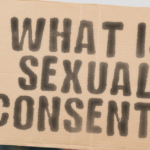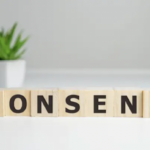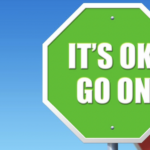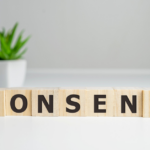A History of Sexual Consent Laws in Australia

Throughout history, sexual consent laws have historically been intrinsically linked with child sexual abuse laws.
In recent years, following the Royal Commission into Child Sexual Abuse and the high profile sexual assault trial of Saxon Mullins, both sexual consent and child sexual abuse laws have been significantly strengthened in New South Wales, along with other states and territories, which have had the effect of making it far more difficult for those who are accused of sexual offences to secure not guilty verdicts.
Age of consent
The age of sexual consent in New South Wales is generally 16 years, meaning that anyone under that age is not able to consent to sexual activity, and that a person is committing sexual offence if he or she does so.
There are exceptions to this rule: the age of consent is increased to 18 years where he or she is under the ‘special care’ of another and there are also provisions to protect those who are of ‘similar age’ from being convicted.
The current legislation outlines a vast range of sexual offences and in most cases, it does provide age groups as a guide to determine the severity of offences and appropriate penalties.
However, it hasn’t always been this way.
The history of sexual consent
When Australia first became occupied by the British, both women and children were considered to be nothing more than “chattels” (property) and could not be considered victims of sexual offences under the law.
Indeed until the nineteenth century, Australia followed British common law which made women subordinate to men.
This meant that they were subject first to their fathers, and then when they got married, to their husbands.
Their property, income and children were, by default, also the legal property of their husbands.
Essentially, men could do anything they wished to their wives and children, short of killing them – they could sell their kids, and enslave their wives.
In early Australian ‘settlements’, domestic abuse and non-consensual sexual activity was rife, not just amongst the occupiers but also by them towards the Indigenous population, whose women were systematically enslaved and used as ‘bed warmers’; in other words, raped.
Abuses against Children
Abuses against children were not really acknowledged in any meaningful way until the mid-1800s when welfare agencies began to raise the issue – even though the government remained fairly ambivalent about what was going on.
With limited resources, these groups mostly only provided shelter and care if they could, usually on an ad hoc basis, until the children were old enough to make their own way. Women were largely left to fend for themselves and domestic and family violence was rarely interfered with.
It was something that occurred mostly behind closed doors, and stayed there. And many would argue that this has been the case up until recently when figures showed just how prevalent it is in Australia.
Governments – local and state – are scrambling to find funds to adequately resource emergency shelters, long term accommodation and train police to identify and respond to domestic violence.
This is very much the current narrative. And although laws are changing – making coercive control a criminal offence last year was considered a major step forward, many still believe that there is not enough protection for victims of domestic abuse.
But back to the history books.
In the latter part of the nineteenth century, early feminists and moral groups campaigned together to have the age of consent raised. In 1883 New South Wales raised the age of consent to 14 years. And, over the following decade, the other states followed suit – Western Australia raised the age of consent to 14 years, Queensland to 14 years, South Australia to 16 years and Victoria to 16 years.
It was around this time that many jurisdictions also legislated more child sexual offences, making it, for the first time, a criminal offence to procure a child for sexual purposes.
It also became an offence for male teachers to have sexual relationships with their students.
In the early 1900s there were two significant developments which led to vast improvements in the way children were treated under the law.
In 1905, New South Wales established the Children’s Court, which changed the way the law had previously dealt with children, who mostly committed crimes (and still do) out of desperation and poverty.
In 1910 New South Wales increased the age of consent from 14 to 16 years, where it remains.
The impact of Freudian Psychology
From about the 1930s through until the 1960s, psychologists began to study the effects of child sexual abuse more closely, although the subject was still taboo. And, in fact, it was prominent psychologist Sigmund Freud who is widely believed to have hampered progress in the area of children’s rights and child sexual abuse.
Freud was widely regarded, and he theorised that children who reported sexual abuse by adults had either imagined or fantasized the experience.
However, by the 1960s the issue was difficult for governments to ignore, and this led to incremental changes.
Around this time, Australia and many other countries established formal child protection agencies which put child welfare firmly on the political agenda and made it a government responsibility.
But it wasn’t until the 1970s though that real progress was made and sexual violence against women and child sexual abuse became more socially accepted topics of discussion.
The 1970s was also a time of considerable political activism, and this led to government inquiries into various issues, particularly with regard to the abuse of children, and also, subsequently, changes in legislation.
This resulted in updating the definitions of sexual penetration/intercourse/carnal knowledge, expanded offences around child abuse materials/child pornography/child exploitation materials; and the introduction of mandatory reporting laws.
During this time there was also an additional focus on how victims of sexual assault were treated within the framework of the criminal justice system and this facilitated changes in the way forensic evidence was gathered, medical examinations were carried out, and also the way victim survivors of both sexual assault and child sexual abuse, were treated in their pursuit of justice.
It’s interesting to note that even with the social and political spotlight on sexual relationships and consent in the 1970s which did result in improvements for women and children, it wasn’t until 1984 that homosexuality was finally decriminalised in New South Wales.
Since the year 2000
In the year 2000, NSW introduced the Child Protection Register, which is legislated by the Child Protection (Offender Registration) Act 2000.
Under the Act, a child is defined as a person under the age of 18 years. The objectives of the Register are to:
- increase and improve the accuracy of police intelligence,
- assist to investigate and prosecute child sex offences committed by repeat offenders,
- deter people from re-offending,
- help to monitor and manage child sex offenders in the community, and
- help to create a sense of security for child abuse victims and their families.
NSW Child Sexual Abuse offences
In 2018, based on recommendations by the Royal Commission into Child Sexual Abuse, NSW
Introduced the Criminal Legislation Amendment (Child Sexual Abuse) Bill which introduced a range of reforms to better protect children, including making it a crime to offer a child a material or financial benefit to engage in sexual activity and to ‘groom’ a parent or carer with the intention of engaging in sexual activity by offering financial or other material benefits.
Persistent sexual abuse was also redefined, and a new offence of sexual touching of a young person between 16 and 18 under special care was created.
A new failure to report offence requires all adults to report child sexual abuse and failing to do so can lead to prison time of two years. And a new ‘failure to protect’ offence was also created.
A significant change to the Sentencing Procedures Act stipulates that an historical child sex crime an offender must be sentenced under current laws, rather than those in place at the time the offence was allegedly committed.
Affirmative consent
Affirmative consent laws were introduced in New South Wales in 2021, largely driven in New South Wales by the high profile case of Saxon Mullins who endured a five-year long legal battle involving two high profile trials, after she accused Luke Lazarus of sexually assaulting her in an isolated alleyway behind a Kings Cross nightclub in 2013.
Along with NSW, Tasmania, the ACT and Victoria all have “affirmative consent” laws in place.
Essentially, under the new laws, anyone engaging in sexual activity needs to communicate an ‘enthusiastic yes’ response, to be considered to be consenting to the sexual activity.
Anything less than an enthusiastic yes – a nod, a smile, a word or two, a gesture, means consent cannot be taken for granted.
Moreover, the laws stipulate that consent for one activity does not automatically mean consent for another type of sexual activity, and consent given for prior sexual activities, does not automatically mean consent for future sexual activities. The laws have been met with controversy, because many people believe they impact negatively on the ‘privacy’ of sexual relationships, however, the laws are not designed to legislate sexual relationships involving parties who are eager and in agreement about participating, they are designed to make it easier to prosecute rape and other sexual offences where advances were clearly unwarranted and unwanted.
Coinciding with the introduction of new laws, New South Wales also introduced five new jury directions to clarify that:
- Sexual assault can occur in many different situations, including between acquaintances or people who are married or in a relationship.
- Sexual offences aren’t always accompanied by violence, threats or physical injuries
- There is no normal or typical response to being sexually assaulted, and juries must not rely on preconceived ideas about how people respond to a sexual assault.
- Trauma may affect people differently, which means some people may show signs of emotional distress when giving evidence and some may not, and
- It should not be assumed that a person consented to sexual activity because of their behaviour, such as the way a person is dressed or the fact that they have consumed alcohol or drugs.
So an enormous amount has changed in relation to both social attitudes towards and laws against non-consensual sexual activity and child abuse across Australia.
Has the parliament gone too far?
Some believe the pendulum has swung too far, with affirmative consent laws and judicial directions having the effect of reversing the presumption of innocence; in other words, creating a situation whereby an accused person is for all intents and purposes required to prove their innocence rather than the prosecution being required to prove guilt.
Equally, the new directions are seen by some as displacing the fundamental principle that fact-finders such as jurors should be left to make determinations regarding credibility without judges telling them when a person may or may not be lying or, more specifically, to form the view that a complainant may not be lying when a juror uses his or her own life experience and assesses the evidence at trial to form the contrary view.
The concern, of course, is that by potentially going too far in attempting to protect genuine victims, innocent people will end up being convicted.
In such an environment, William Blackstone’s famous ratio comes to mind: ‘better that ten guilty persons escape, than that one innocent suffer’.
Receive all of our articles weekly
Related Articles
RELATED LEGISLATION
- Section 61i Crimes Act 1900 | Sexual Assault
- Section 61J Crimes Act 1900 | Aggravated Sexual Assault
- Section 61JA Crimes Act 1900 | Aggravated Sexual Assault in Company
- Section 61KC Crimes Act 1900 | Sexual Touching
- Section 61KD Crimes Act 1900 | Aggravated Sexual Touching
- Section 61KE Crimes Act 1900 | Sexual Act
- Section 61KF Crimes Act 1900 | Aggravated Sexual Act
- Section 61HH Crimes Act 1900 | Definitions Relating to Sexual Consent Laws
- Section 61HI Crimes Act 1900 | Consent Generally
- Section 61HJ Crimes Act 1900 | Circumstances in Which There is No Consent
- Section 61HK Crimes Act 1900 | Knowledge about Consent
- Section 80AG Crimes Act 1900 | Defence of Similar Age







